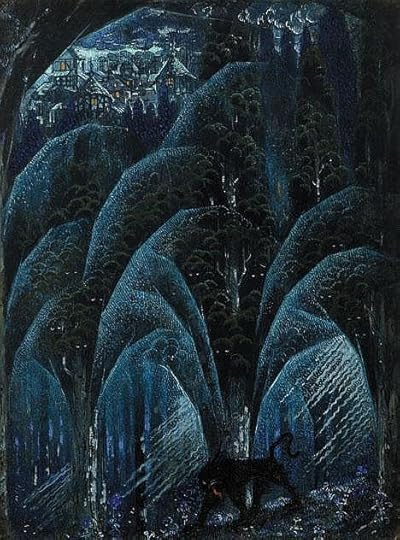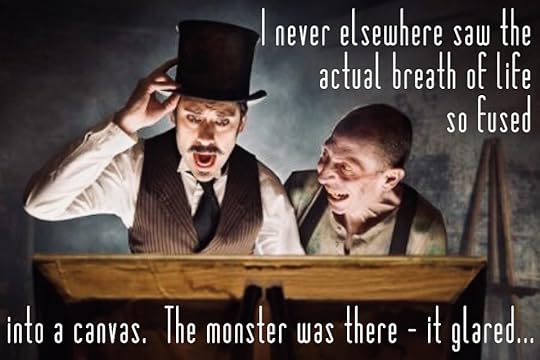What do you think?
Rate this book


66 pages, ebook
First published October 1, 1927




It was a colossal and nameless blasphemy with glaring red eyes, and it held in bony claws a thing that had been a man, gnawing at the head as a child nibbles at a stick of candy. Its position was a kind of crouch, and as one looked one felt that at any moment it might drop its present prey and seek a juicier morsel. But damn it all, it wasn’t even the fiendish subject that made it such an immortal fountain-head of all panic—not that, nor the dog face with its pointed ears, bloodshot eyes, flat nose, and drooling lips. It wasn’t the scaly claws nor the mould-caked body nor the half-hooved feet—none of these, though any one of them might well have driven an excitable man to madness.
It was the technique, Eliot—the cursed, the impious, the unnatural technique! As I am a living being, I never elsewhere saw the actual breath of life so fused into a canvas. The monster was there—it glared and gnawed and gnawed and glared—and I knew that only a suspension of Nature’s laws could ever let a man paint a thing like that without a model—without some glimpse of the nether world which no mortal unsold to the Fiend has ever had.



It is even more interesting to check all the artists mentioned in the story when Thurber compares them to Pickman's art.
'It was a colossal and nameless blasphemy with glaring red eyes, and it held in body claws a thing that had been a man, gnawing at the head as a child nibbles at a stick of candy. Its position was a kind of crouch, and as one looked one felt that at any moment it might drop its prey and seek a juicier morsel.'
